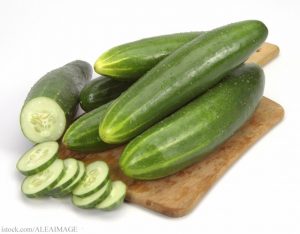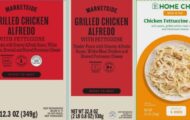 Imported cucumbers identified as the source of a Salmonella outbreak were supposed to have been barred from entering this country two months ago, but people are still getting sick. How?
Imported cucumbers identified as the source of a Salmonella outbreak were supposed to have been barred from entering this country two months ago, but people are still getting sick. How?
Cucumbers have a shelf a life of about two weeks and symptoms of a Salmonella infection usually appear within six to 72 hours of exposure. Yet, people sickened by the three outbreak strains of Salmonella Poona have reported onset of illness as recently as early November.
Despite two recalls and two import alerts essentially banning cucumbers from the farm in question, is the tainted produce somehow still on the market?
The Centers for Disease Control and Prevention (CDC) reported Thursday that 838 people in 38 states have been sickened, 165 have been hospitalized, four have died. Since the last update on October 14, 71 new illnesses from 23 states have been reported. These are not newly reported illnesses that occurred previously but have recently been ruled part of the outbreak.
Public health officials used DNA “fingerprinting” to identify three outbreak strains of Salmonella Poona associated with this outbreak. Those strains were also found in cucumbers collected from retail locations and in samples taken from the Andrew & Williamson, the U.S. distributer of the imported cucumbers.
On September 4, 2015, Andrew & Williamson recalled the cucumbers sold under the “Limited Edition” brand label during the period from August 1, 2015 through September 3, 2015. Then, on September 11, another recall was issued by Custom Produce Sales for all cucumbers sold under the Fat Boy label starting August 1, 2015. Those unlabeled cucumbers, which were sold in Nevada, were sent to Custom Produce Sales from Andrew & Williamson.
The recalled cucumbers, dark green in color, between 7 and 10 inches long were sold unlabeled in bulk displays at grocery stores. A list of retailers that sold the recalled cucumbers has not been provided by health officials. But Walmart, Winco, Food 4 Less, Ralphs, and Savemart stores all carried them. Some restaurants also served them, including Red Lobster locations in Minnesota.
By state the case count is as follows: Alabama (1), Alaska (17), Arizona (129), Arkansas (13), California (232), Colorado (19), Connecticut (1), Florida (1), Hawaii (1), Idaho (24), Illinois (9), Indiana (5), Iowa (7), Kansas (2), Kentucky (1), Louisiana (5), Maryland (1), Minnesota (40), Missouri (14), Montana (16), Nebraska (8), Nevada (16), New Hampshire (1), New Mexico (32), New York (6), North Dakota (8), Ohio (3), Oklahoma (13), Oregon (22), Pennsylvania (2), South Carolina (10), South Dakota (3), Texas (42), Utah (58), Virginia (1), Washington (25), Wisconsin (43), and Wyoming (7).
Fifty percent of the case patients, who range in age from less than 1 year to 99 years old, are children younger than 18. The fatalities were reported from Arizona (1), California (1), Oklahoma (1), and Texas (1). The investigation is ongoing.




